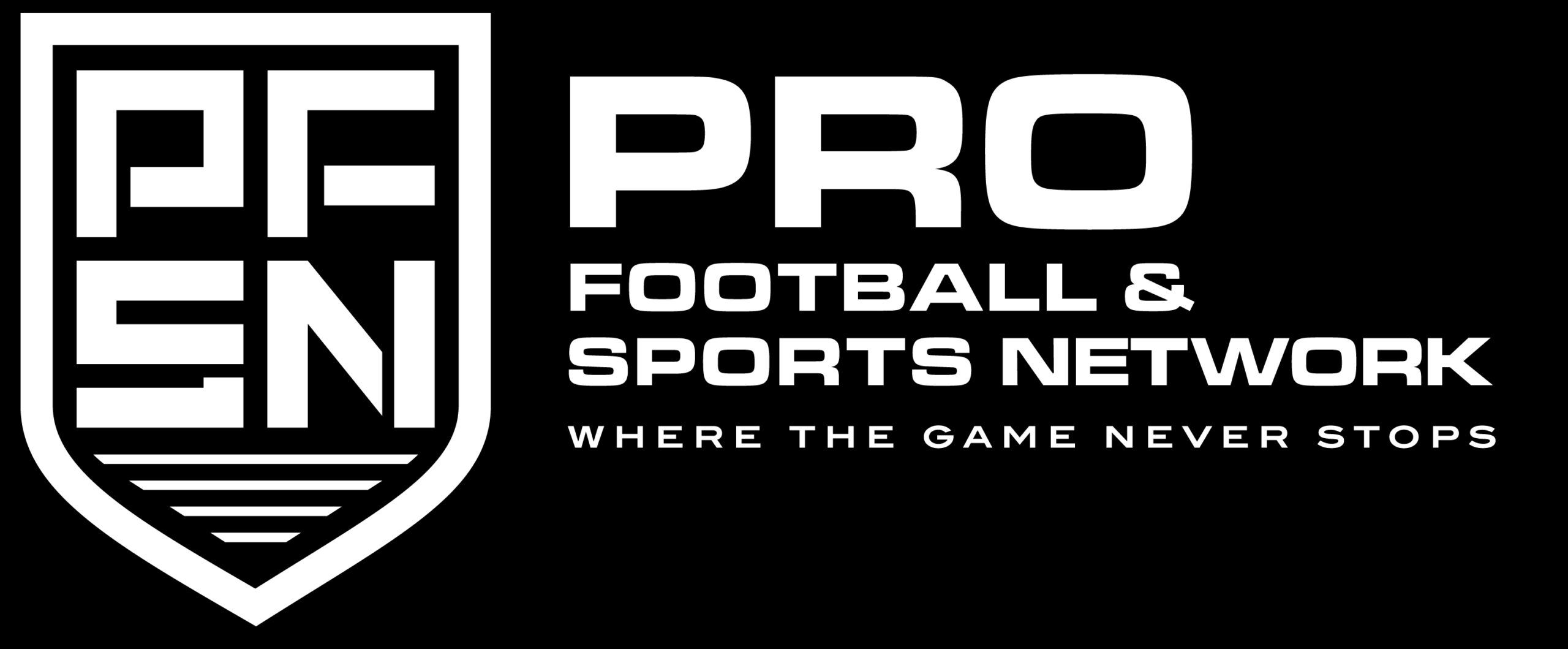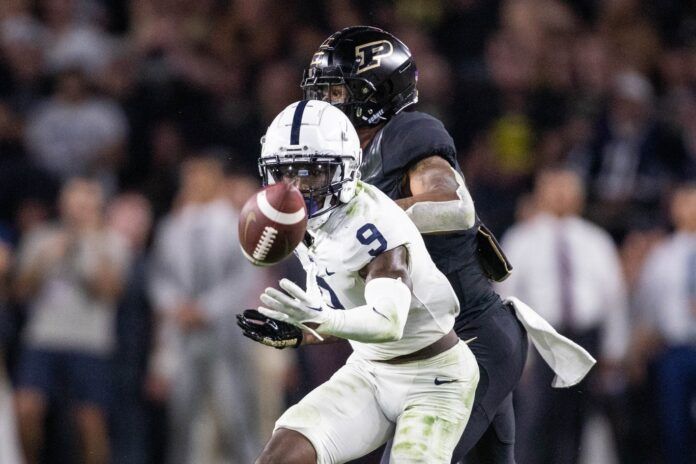The 2023 NFL Draft will be here before we know it now that the college football season has officially kicked off. With the first few college football games in the books from Weeks 0 and 1, Pro Football Network’s Scouting Notebook returns with insight into the draft process from now until April.
Early names to know for the 2023 NFL Draft
Oliver Hodgkinson: College football is officially back! While that means exciting encounters and stunning upsets across the nation, it also means that the 2023 NFL Draft cycle begins in earnest.
As a department, and as an individual, we’ve put a lot of work in during the offseason to ensure that we’re prepared as evaluators. Now, we’re watching every game with an intense lens to see if each individual we watched over the summer can improve against the areas for development in their summer scouting reports.
Even with that level of preparation, there are players that will still surprise. Knee-jerk reactions are to be avoided, especially this early in the campaign. However, this week, we’ll take a look at some players who’ve impressed in Week 0 and the opening salvo of Week 1 college football games.
By the time you read this, there might be additional players who are worthy of opening weekend praise. But for now, these are my key scouting takeaways for 2023 NFL Draft prospects.
Joey Porter Jr., CB, Penn State
We’re going to be treated to another high-quality cornerback class in the 2023 NFL Draft. Despite being repeatedly tested in a narrow win over Purdue on Thursday evening, Penn State defensive playmaker Joey Porter Jr. showcased why he should be in the conversation with the very best of them. The fourth-year prospect led the team with eight tackles while tallying a team-high-tying three pass breakups.
Porter was all over the field for the Nittany Lions. He boasts great size at 6’2” and 198 pounds, and the frame allows him to play a physical brand of football. We knew coming into this game that he possessed great length, and he repeatedly put that to good use at the catch point against Purdue.
Porter is an incredible athlete, and on several plays Thursday night you could see his play speed and fluidity at work. The Penn State cornerback also flashed some high-level play diagnosis skills that almost resulted in an interception during the first half.
Bryce Ford-Wheaton, WR, West Virginia
While we enter the season as prepared as we can be for every 2023 NFL Draft prospect, some players you’re simply not going to get the time to cover. Like the cornerback class, the wide receiver cohort that will head to the NFL next April shows early promise and depth, so it’s easy to not have eyes on every single prospect.
That’s certainly the case for myself where West Virginia pass catcher Bryce Ford-Wheaton is concerned. The Mountaineers wide receiver has had middling production in his career, but he exploded onto the national stage Thursday.
Ford-Wheaton was a ludicrously reliable target for JT Daniels in the Backyard Brawl defeat to Pitt. At one point in the evening, it became something of a joke that Daniels could just sling it downfield and rely on BFW to secure the catch.
At 6’3” and 220 pounds, Ford-Wheaton’s not going to be rocked by contact, and he repeatedly showed he could fight through contact to secure even lost-cause catches. However, he’s not just a jump-ball specialist. The West Virginia man has impressive speed for his size that can help take the top off a defense. I’m looking forward to seeing him establish himself as a contender in this 2023 NFL Draft class.
John Morgan III, EDGE, Pittsburgh
We’ve been talking about the Pittsburgh defense as one of the elite units in college football this season, and they were completely as advertised to kick off Week 1. Ignore the fact that they gave up 31 points to the Mountaineers. There were certainly some improvements and adjustments to make in the secondary, but the front seven was disruptive all night long.
Calijah Kancey, SirVocea Dennis, Deslin Alexandre, and Habakkuk Baldonado have all received attention in the early 2023 NFL Draft cycle. But, it was John Morgan III who impressed.
The 6’2”, 265-pound EDGE was an unstoppable force when called into action. He plays with a relentless hot motor that smacks of having a chip on his shoulder and something to prove.
Morgan routinely showcased explosion and speed to fly into the West Virginia backfield, tallying three tackles for loss and one sack on the night. Morgan is also powerful and has an arsenal of pass-rush moves, utilizing a long arm to devastating effect against WVU. Furthermore, we saw some flexibility to bend around the outside arc as a pass rusher.
John Michael Schmitz, C, Minnesota
Minnesota center John Michael Schmitz is a summer scouting clubhouse leader in the race to be the best center in the 2023 NFL Draft class. While it was only against New Mexico State, Schmitz appeared to demonstrate exactly why he’s earned that accolade.
At 6’4” and 320 pounds, he’s a solid wall at the heart of the offensive line, and he showed that as a roadblock for returning running back Mohamed Ibrahim. Schmitz opened a lane for Ibrahim’s first touchdown, then drove a man to the ground as the Minnesota RB drove into the end zone for a second score.
Schmitz’s powerful and dense frame makes him a force at the pivot. But what is more exciting about Schmitz as a 2023 NFL Draft prospect is his high-level athleticism for his size.
He’s more than capable of initiating contact in the trenches with an explosive first step and lateral agility that allows him to dominate his opponent by simply being first to his marker. Meanwhile, and we saw this multiple times on Thursday night, Schmitz has the athleticism to get out to the second level as a blocker while posing a dangerous moveable roadblock on screen plays.
Football is physics
Ian Cummings: We all get there sometimes. It can be so taxing watching so much tape during and after the season, that sometimes you get overwhelmed and lose your focus or your rhythm. And if you’re like me — a growing evaluator with flaws — it can be easy to lose confidence and lose track of what you’re looking for at a certain position.
If you’re a young evaluator, it’s natural to feel overwhelmed at times, because there are so many details that go into achieving success at each position. It can be very hard to keep track of. But one lesson that helps me stay grounded, beyond a pure focus on the diagnostics, is this: Football is physics.
In truth, every sport is physics. All of life is physics. But when you look at football through the lens of physics, it can help you better understand the fundamentals of what precedes success at certain spots.
Physics, in its most basic form, is the study of matter and how bodies of matter interact through space and time. In football, the most prevalent physics influence deals with potential and kinetic energy. So much of football is loading up potential energy and unleashing kinetic energy, over and over again. The ways in which players do this are different at every position, but the physics foundation remains.
For example, notice how quarterbacks who get their hips farther around in their stance are able to generate more hip torque and velocity. Notice how offensive linemen who keep their arms bent in at the elbows and at their sides in their stance can generally unleash more power on extensions. Notice how wide receivers who sink effectively at stems can better explode out of breaks.
It all deals with potential energy storage and kinetic-energy conversion. The more efficiently you store and convert energy, the better you can do your job as a football player.
Simply understanding physics isn’t quite enough to reset your footing. But when you know how energy transfer works, and when you know how mechanisms of matter store and release energy, you can transfer that knowledge over to the football application side.
How does a QB load energy ahead of his release? How does an offensive lineman load energy ahead of punches? What are ways to help players better manage inertia in space and control their body movements?
Once you start asking those questions, you can get a better understanding of how things work on the football field. And how things work is truly one of the most important guiding lights as an evaluator.

